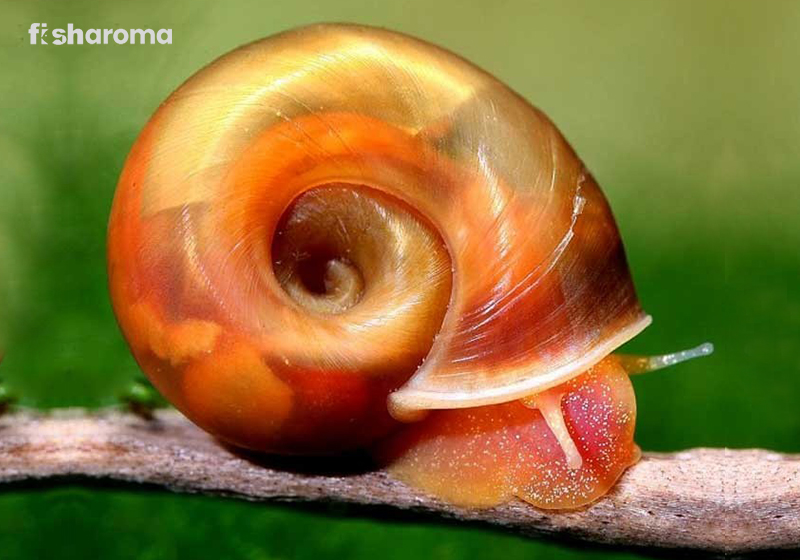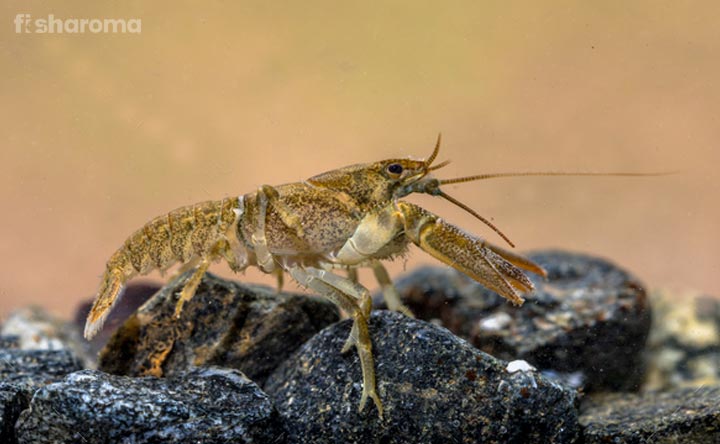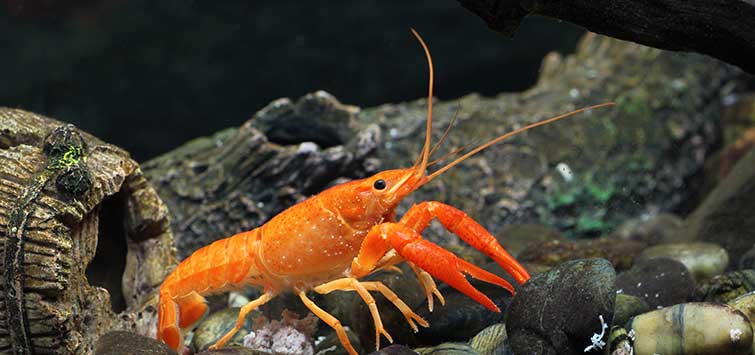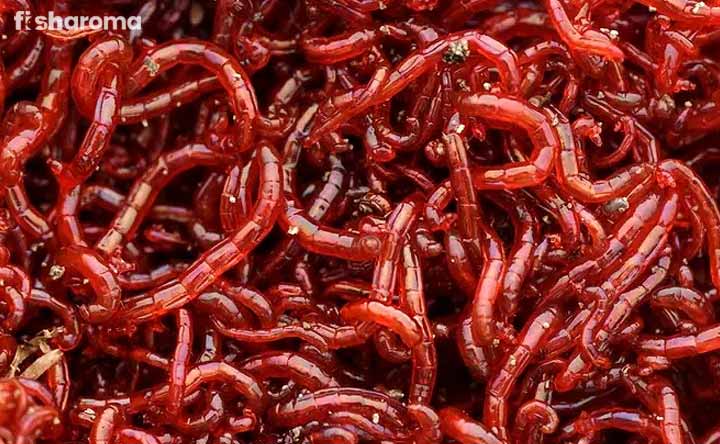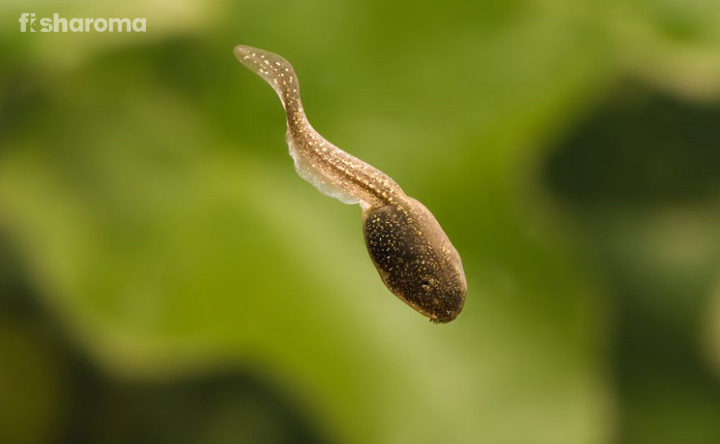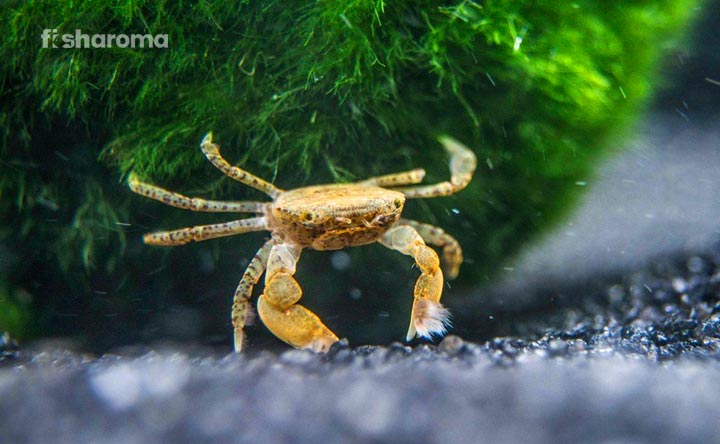What do Ghost Shrimps Eat? The Complete Care Guide to Their Dietary Plan

One of the most ethereal-looking species that you can host in your aquarium, Ghost Shrimps are a delight to watch. They are counted amongst the most popular options for freshwater crustaceans that can be petted. These tropical angels are extremely easy to care for and provide multiple benefits, including cleaning your tank and serving as food options for your other aquatic pets. But what do they eat? What are their preferences? When and how often do you need to feed them? We uncover the answers to everything that you need to know regarding what do Ghost Shrimps eat in this article. So, let’s find out.
Overview
Ghost Shrimps are crustaceans that belong to the Palaemonetes family. These freshwater mythical-looking creatures have originated from North America, and are often used by fishkeepers as bait for catching fish.
An out-and-out scavenger by nature, they finish up any leftover food in your tank as well as keep the population of algae in check. In essence, they serve as a tank cleaner. Their transparent bodies make for an ethereal presence in your tank.
Peaceful by nature, they have an omnivorous diet. They have a short lifespan, with most of them living up to only just a year. Extremely small in size, they grow up to 1.5” (3.8 cm).
Many fishkeepers keep a separate tank in their household to host Ghost Shrimp and use them to feed the fish in their main tank.
Eating Habits of a Ghost Shrimp in the Wild
First of all, let’s try to understand what do Ghost Shrimps eat in the wild. Native to North America, Ghost Shrimp are found in rivers, lakes, and streams. You can find them in slow-moving water at the bottom of these water bodies.
They Live at the bottom of the water, near the substrate out of necessity. Any food matter that sinks to these water bodies from the surface ultimately rests on the substrate, which serves as perfect scavenging grounds for these shrimps. Their habitat is also filled with logs, rocks, and a lot of vegetation that act as hiding spots, protecting them from predators.
In the wild, their diet is pre-dominantly herbivorous due to the abundance of plant matter in the form of detritus. In a situation, when there is a dearth of detritus, Ghost Shrimp are seen nibbling at live plants. This, however, doesn’t pose any serious threat to the plants due to the tiny size of these creatures. A large group of them nibbling together a plant is another story altogether.
Algae also dominate their diet and they are regarded as one of the most prolific algae-eaters out there. When it comes to eating Hair Algae, none can be as efficient as our ghosts here.
Similar to any other omnivore, the options available for Ghost Shrimps are pretty huge. They also feed on small insects, eggs or larvae, or any other organic matter.
Eating Habits of a Ghost Shrimp in an Aquarium
First of all, let us tell you that Ghost Shrimps can go on a period of not eating during the initial days of getting introduced to a captive environment. This is mainly due to the fact that they require time to adjust themselves to the new environment.
Building a Safe Home
If you replicate your tank as close to their natural environment, then the process of them acclimatizing to the aquarium accelerates.
This is why you need to set the temperature of the tank water between 65-85° F (18-29° C) with 75° F (23° C) serving as the optimal temperature. The pH level of the water should be 6.5-8.0 and the hardness of the water should be slightly strong. Speaking of mineral content, the level of ammonia and nitrite should be 0 (zero), while the level of nitrate should be less than 20 ppm. Keep them in a species-only 5-gallon tank. Each gallon can suffice for 3-4 shrimps.
Probably, the most significant aspect of their habitat is the substrate. Since Ghost Shrimps spend a considerable amount of time sifting through the substrate in search of food, you need to ensure that there aren’t any sharp objects. Any finely-grained substrate will get the job done. The substrate must be gentle to the delicate, long antennas of these shrimps.
With the tank requirement set, it would be easy for you to feed them. The basic idea should be diversifying their diet. Therefore, feel free to include a bit of everything in their diet – frozen, live, flake, pellets, etc. They can tolerate fat-based food because shrimps are naturally high in fats and oils.
Feeding them calcium supplements will help in hardening their shells. Their shell protects them from the attacks of other fish and the harsh environment in general.
Food to be Fed Ghost Shrimps in an Aquarium
Keeping all these in mind, the ideal diet for a Ghost Shrimp in a captive environment, such as an aquarium, should consist of the following items.
- Algae
- Algae Wafer
- Brine Shrimp
- Fish Pellet Food
- Flake Food
- Daphnia
- Blanched vegetables such as cucumber, spinach, zucchini, or romaine
- Mosquito larvae
- Squid
- Indian Almond Leaves
- Bloodworm
- Spirulina
How Often & How Much Do Ghost Shrimps Eat?
Ghost Shrimps tend to overeat, which can lead to ailments in them. Therefore, you need to keep a close watch on them. Since they are tiny creatures, it is advised to feed them in small quantities. Ideally, different types of food should be fed at different times of the day in small portions.
If you are hosting your shrimps with other fish, then they will consume and finish off the leftover food from the substrate. However, if you are hosting them in a species-only tank, then obviously they would need their own food.
The amount of food that you have to provide them will also be dictated by the population of algae in your tank. The more algae in your tank, the less food you need to provide them. If your tank doesn’t have an algae growth and you are dependent on algae wafers, then the recommended portion is one algae wafer for a group of four Ghost Shrimps every other day.
Feeding them thrice a day will ensure their good health. As far as the quantity is concerned, two pea-sized portions of boiled vegetables can be fed in a single go. Throughout the day, you will notice your Ghost Shrimp grazing on biofilm and algae, which means they don’t have a particular feeding time. You just need to plan your schedule as to when you want to feed them.
Eating Habits of a Baby Ghost Shrimp
The main focus while fixing the food for young Ghost Shrimp should be to provide protein to help them grow healthily. You need to understand that young fires of Ghost Shrimps have to be fed differently than their adult counterparts.
Pre-Conditioning
To understand what do Ghost Shrimps eat in their primal stage, first of all, you need to bear in mind the circumstances that are needed for the successful breeding of these creatures. Now, it may happen that your Ghost Shrimps have bred accidentally without any assistance from your end. After all, it’s a natural process! In such a case too, the fries have to be provided with a different set of food. But first, let us explain the requirements you need to fulfill for breeding them.
You need to ensure that there are both male and female Ghost Shrimps in your breeding tank. When it comes to sexual dimorphism, you will see females are larger and have a green saddle underneath their bodies.
The females produce 20-30 green-dot like looking eggs every week that are attached to their legs. Males then proceed to fertilize these eggs.
If you don’t use a breeder tank, the fries will be vulnerable to other species in your main tank. Use a sponge filter in the tank so that the fries don’t get sucked into the equipment.
After the eggs hatch, which might take around 3-4 weeks, you need to transfer the female back to the main tank, or else they might eat them.
Foods to be Fed a Baby Brine Shrimp
You may keep some aquatic plants such as Java Moss or Hornwort that will serve as food sources for them. Having algae in the breeding tank also helps them satiate their hunger.
The fries will eat the algae and plant debris on their own without any assistance from your end. But the food that you add to the tank has to be adjusted to their requirements. Make sure the food that you provide these fries are tiny in size because of their small mouths. To put it simply, you need to crumble down the flake foods into a size that will fit their mouths.
Avoid live foods for them since it will be difficult for the fries to catch the live foods as they continuously escape.
Another food source for them is Baby Shrimp Food. This is extremely beneficial to them since it will serve as the perfect gateway between their childhood and maturity. It comes in powder form that needs to be sprinkled onto the tank water.
As soon as the legs of the fires have fully developed, you can feed them the same food as that of an adult Ghost Shrimp. This should take around five weeks. After this, you may transfer them to the main tank.
Eating Habits of an Adult Ghost Shrimp
Next up in our ‘What do Ghost Shrimps eat’ article, we discuss their adulthood. Remember us mentioning about Ghost Shrimps overeating? Well, you are going to see examples of it when the fries reach their adulthood since these shrimps spend almost their entire time grazing for food.
They are prolific at finding algae in your tank from every nook and corner. In fact, apart from using as feeds for your fish, the next biggest reason people host Ghost Shrimps in their aquarium is to get rid of algae naturally. If your tank doesn’t have an abundance of algae, then you can provide Algae Wafers to them.
They also nibble on live plants, if you have any in your tank. It is said that if you have a densely planted tank, then you need to provide additional food to them every other day.
Other than algae, pellets are recommended for these creatures since they sink to the bottom of the tank and rest on the substrate, from where they are consumed. Pellets are more useful if your shrimps are residing in a community tank since the sinking pellets may float past your fish’s attention.
Flake foods mostly float on the water surface. However, that doesn’t mean that you can’t feed them to your shrimps since they can readily swim to the surface of the water to consume them.
Watching Ghost Shrimps climb to the surface of the water to eat flake foods is quite a spectacle, but if you have a tall tank, then the recommended food for them is pellets.
You may feed them live as well as frozen food. Make sure that there is a right balance of nutrients in their diet. Feeding them vegetables supply the much-needed fiber to them.
Foods to be Fed an Adult Brine Shrimp
An ideal diet for an adult Ghost Shrimp should consist of the following items:
- Algae/ Algae-Wafer
- Brine Shrimp (live and frozen)
- Bloodworm (live and frozen)
- Mosquito Larvae
- Blanched vegetables
- Soft fruits
- Flake foods
- Sinking pellets
- Plant matter
- Spirulina
- Indian Almond Leaves
Summary
Ghost Shrimps are always hungry and can be seen nibbling live plants and algae all day. In fact, they are regarded as one of the best algae-eaters that one can host in their tank, which also means they are effective tank-cleaners.
They have a tendency to overeat, which is why it is recommended to feed them every other day if you have a heavily planted aquarium since they would anyways nibble on those plants all day. In addition, they prefer pellets, although they are open to flake, live, and frozen foods as well. You may also feed them blanched vegetables and fruits.
Feed them different types of food in small quantities. Ideally, they should be fed three small meals every day. We hope this article has answered every query that you had regarding ‘what do Ghost Shrimps eat?’. At the end of the day, you have to remember that they are not mere feeders for your pet fish or tank cleaners only. You need to pay attention to their diet so that they grow healthily.
Point of Interest
Take a look at the following articles that might interest you.
- What do Tadpoles Eat? – For all those frog lovers, get to know what to feed them in their juvenile, i.e. Tadpole stage from here.
- Bloodworms as Fish Food – A highly sought-after food for your aquatic pets, learn about what makes them so delicious and high in demand from here.
- What do Crayfish Eat? – Want to pet Crayfish in your tank? Well, get yourself updated with their dietary needs beforehand then.

